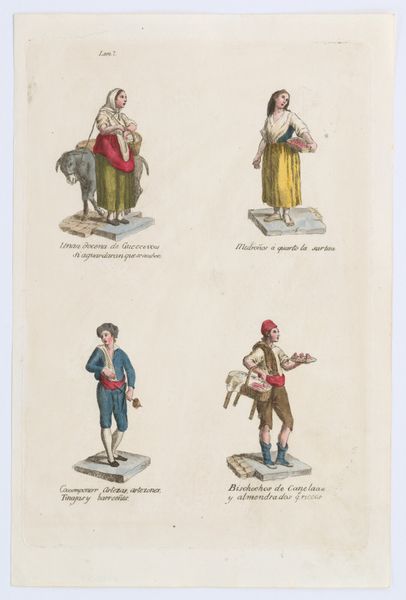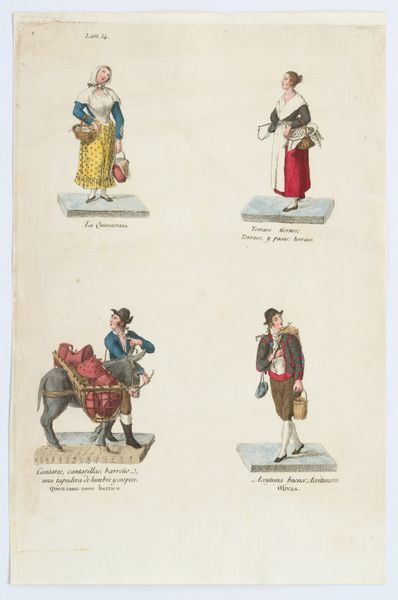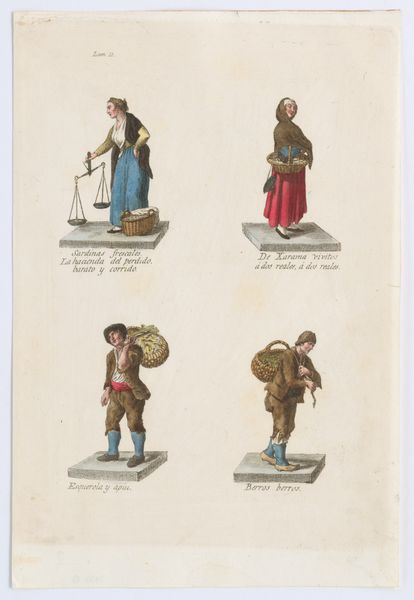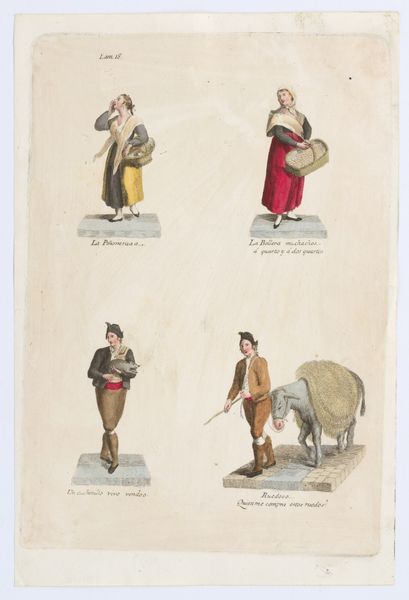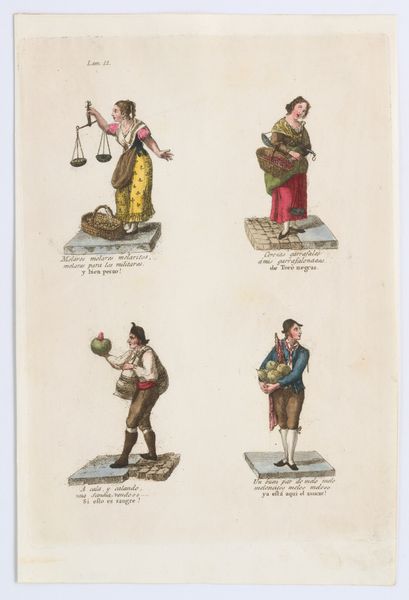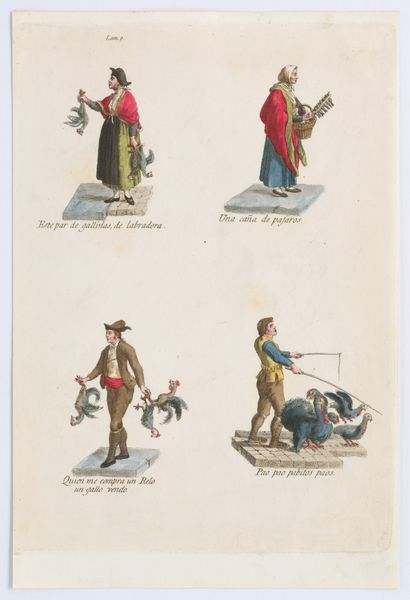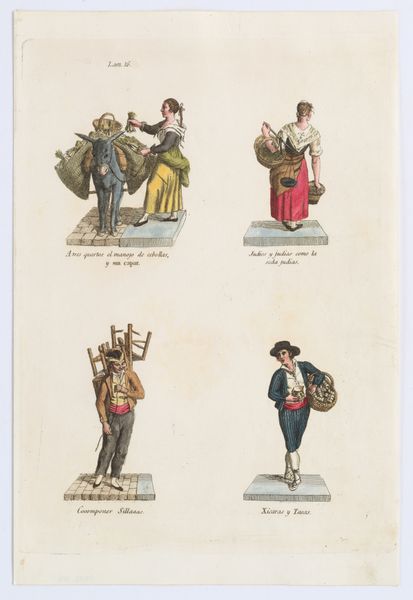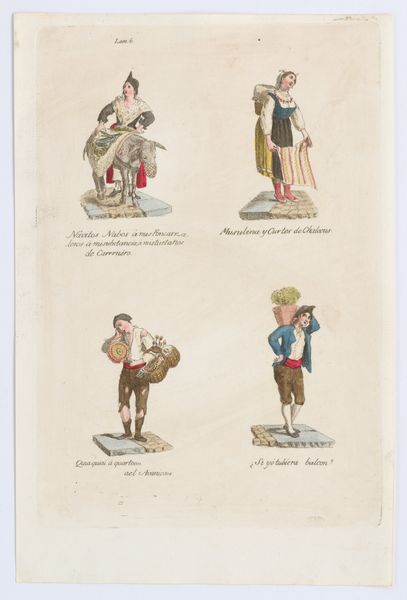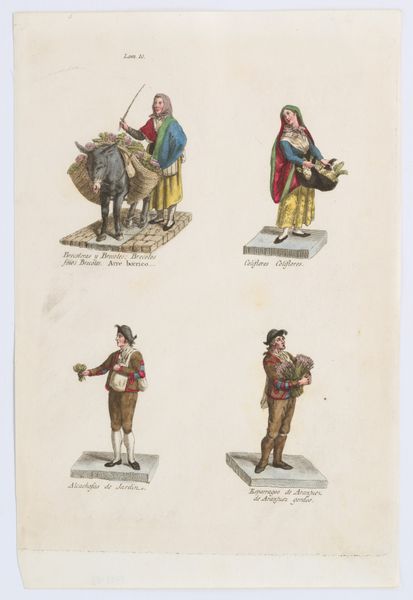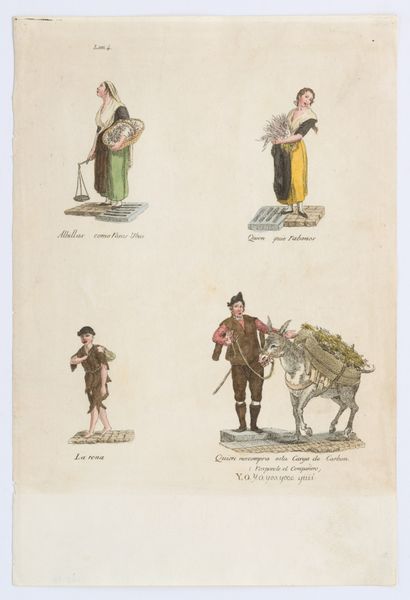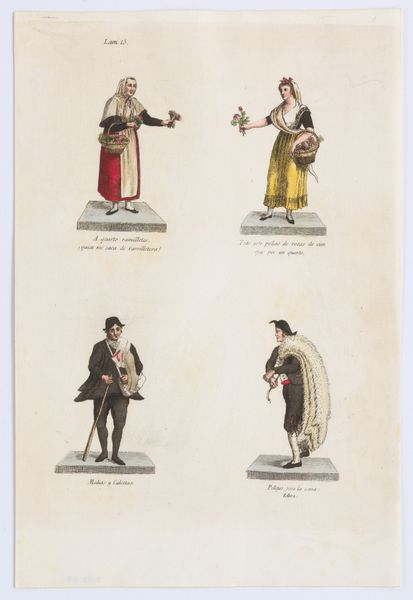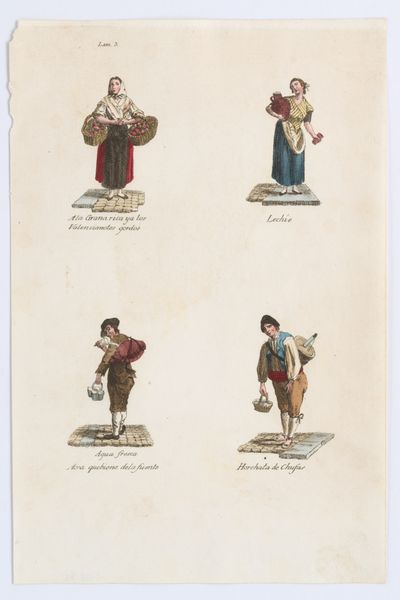
Plate 8: four street vendors from Madrid selling lemons, oranges, pigeons, and shoes, from 'Los Gritos de Madrid' (The Cries of Madrid) 1809 - 1817
0:00
0:00
drawing, print, watercolor
#
drawing
#
water colours
# print
#
watercolor
#
romanticism
#
cityscape
#
genre-painting
Dimensions: Sheet: 11 13/16 × 7 7/8 in. (30 × 20 cm)
Copyright: Public Domain
Curator: Look at this print by Miguel Gamborino, dating from 1809 to 1817, entitled "Plate 8: four street vendors from Madrid selling lemons, oranges, pigeons, and shoes, from 'Los Gritos de Madrid'". Editor: My immediate reaction is the static quality. These figures are so self-contained, almost like individual sculptures placed on plinths. There's a staged feeling that almost cancels the sense of a bustling marketplace. Curator: It's true, there's a tableau vivant effect. It reminds me how the "Cries of Madrid" series encapsulates early 19th century Spanish society through its working class. Each vendor represents a distinct socio-economic niche. The romanticised rendering normalises the gendered expectations and commerce during Spanish occupation. Editor: And let's consider how Gamborino’s process is laid bare, we see the lines, the application of the watercolor; the means of production aren't obscured. Also notice the pigeon vendor has a pack animal that literally looks like it could topple any minute due to the pack’s construction: this detail emphasizes the weight and imbalance of labor. Curator: Absolutely, and in their presentation, one might argue these images served a political function: defining Spanish identity in relation to the Bourbon monarchy, in particular because King Fernando VII sponsored artists like Goya. The series’ romanticized depiction, thus, becomes intertwined with state narratives. It’s not merely about commerce, it’s about power. Editor: This then creates a kind of consumerism, not just of the products, but of these staged depictions of the labor itself. This echoes the increasing industrialization even as we observe this "traditional" street vending that’s presented to us here. Curator: Precisely, and understanding that dichotomy gives us insights into the art’s intent and also its time, where everything begins to enter its modern arrangement. The intersection of consumerism and art can reveal truths behind Spanish identity at a crossroads. Editor: Examining it from this perspective helps one reconcile art with how it operates in markets and what social conditions helped shaped the work of art on display. Curator: Right. These romantic visions are far more potent cultural markers. Editor: Thanks. Curator: Of course.
Comments
No comments
Be the first to comment and join the conversation on the ultimate creative platform.
